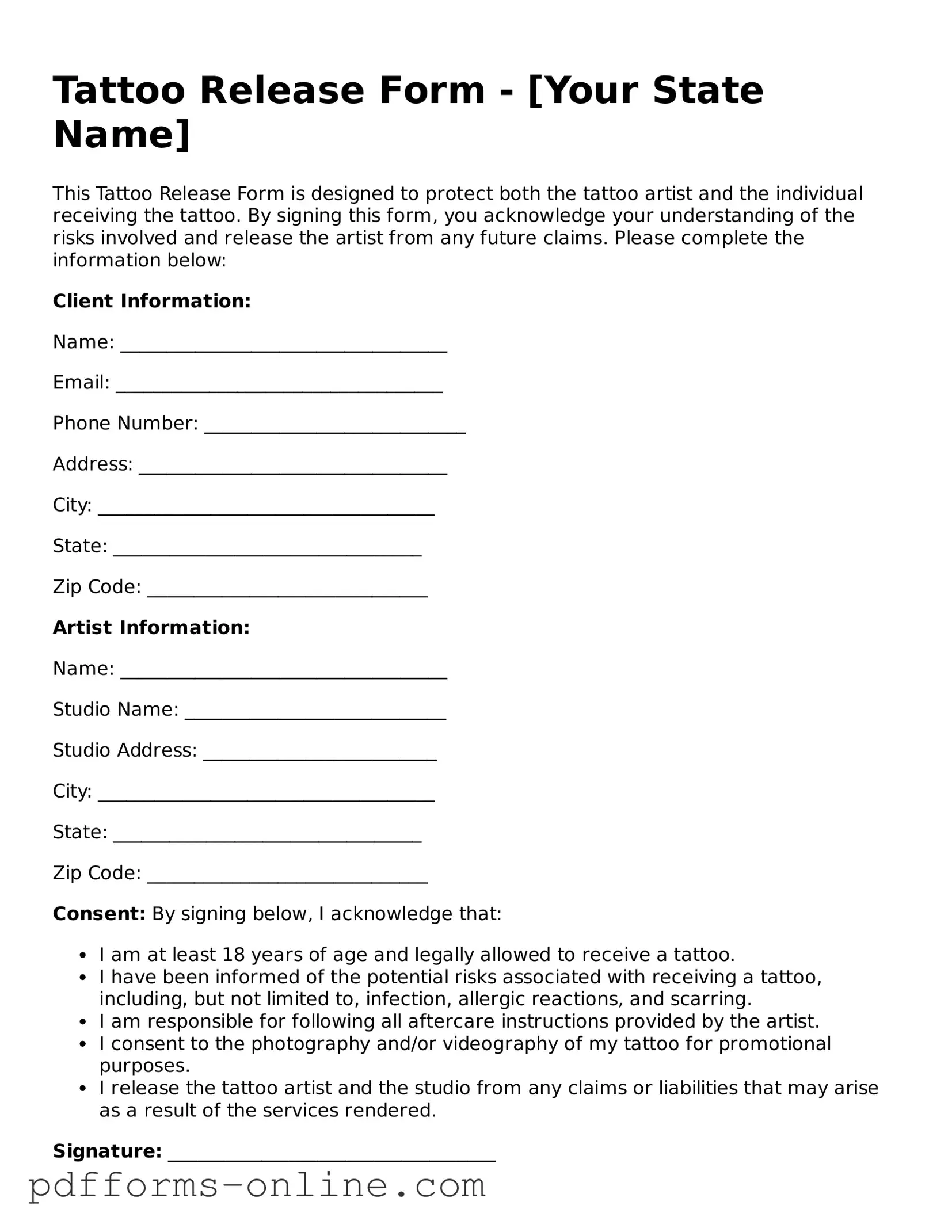Tattoo Release Form - [Your State Name]
This Tattoo Release Form is designed to protect both the tattoo artist and the individual receiving the tattoo. By signing this form, you acknowledge your understanding of the risks involved and release the artist from any future claims. Please complete the information below:
Client Information:
Name: ___________________________________
Email: ___________________________________
Phone Number: ____________________________
Address: _________________________________
City: ____________________________________
State: _________________________________
Zip Code: ______________________________
Artist Information:
Name: ___________________________________
Studio Name: ____________________________
Studio Address: _________________________
City: ____________________________________
State: _________________________________
Zip Code: ______________________________
Consent: By signing below, I acknowledge that:
- I am at least 18 years of age and legally allowed to receive a tattoo.
- I have been informed of the potential risks associated with receiving a tattoo, including, but not limited to, infection, allergic reactions, and scarring.
- I am responsible for following all aftercare instructions provided by the artist.
- I consent to the photography and/or videography of my tattoo for promotional purposes.
- I release the tattoo artist and the studio from any claims or liabilities that may arise as a result of the services rendered.
Signature: ___________________________________
Date: _________________________________
This form is in compliance with [Your State Name] laws. Please ensure all sections are filled out completely before signing.
